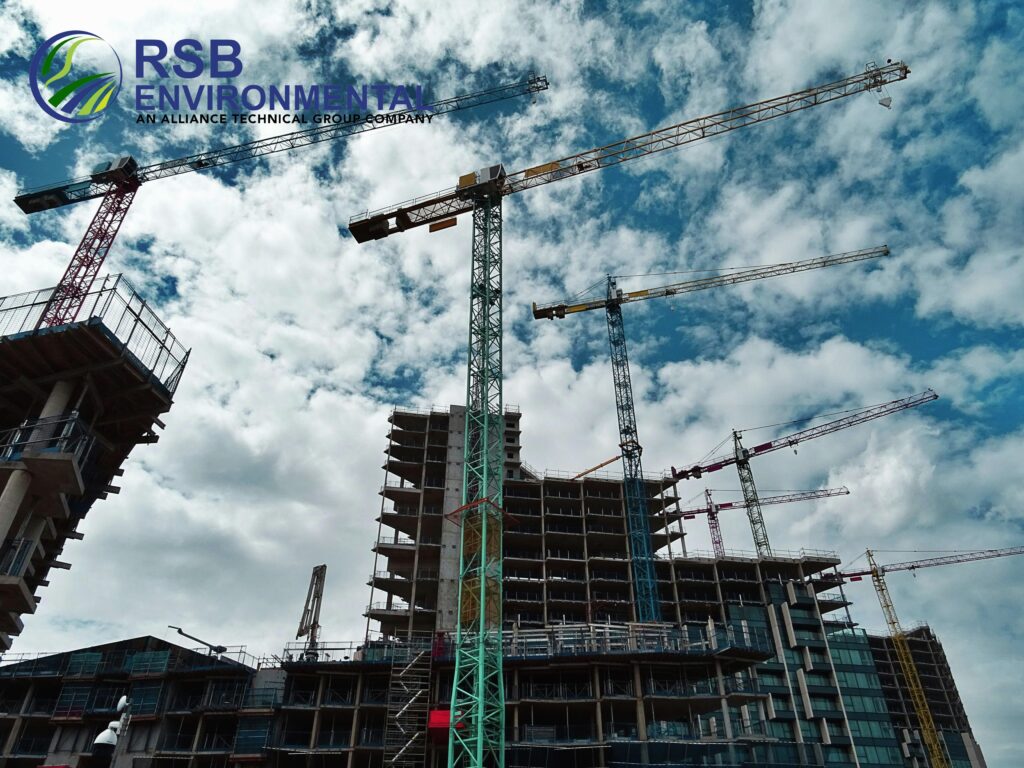The Role of Phase 1 ESA in Due Diligence for Real Estate Development
Understanding Phase 1 ESA Due Diligence in Real Estate
Real estate development requires careful evaluation of potential risks before acquiring a property. One of the most critical steps in this process is conducting a Phase 1 Environmental Site Assessment (ESA) due diligence. This assessment helps real estate developers and investors identify environmental liabilities that could impact property value, regulatory compliance, and project feasibility.
What is a Phase 1 ESA?
A Phase 1 Environmental Site Assessment (ESA) is an industry-standard evaluation that determines whether a property has environmental contamination risks. It follows the American Society for Testing and Materials (ASTM) E1527-21 standard and is often required by lenders, investors, and regulatory bodies to ensure compliance with environmental laws before financing or purchasing a property.
Importance of Phase 1 ESA in Due Diligence
1. Identifies Potential Environmental Risks
Before acquiring a property, developers must be aware of any environmental concerns, such as soil contamination, hazardous substances, or underground storage tanks. A Phase 1 ESA due diligence process helps uncover these issues early, reducing future liabilities.
2. Mitigates Financial and Legal Liabilities
If contaminants are found after purchasing a property, developers and investors may be held responsible for costly remediation efforts. Conducting a Phase 1 ESA protects stakeholders from unexpected financial burdens and legal consequences by ensuring assessments are performed in accordance with state standards.
3. Secures Financing and Regulatory Compliance
Many lenders require a Phase 1 ESA before approving real estate loans to mitigate risks associated with environmental contamination. Additionally, regulatory agencies may require due diligence to ensure compliance with environmental laws, land use regulations, and acquisition requirements.
4. Enhances Property Value and Investment Confidence
Properties that undergo thorough Phase 1 ESA due diligence are more attractive to investors and buyers. Knowing that a property is free from significant environmental risks increases its marketability and long-term value. The report generated provides a comprehensive understanding of the environmental history and potential impacts on the subject property.
5. Informs Future Development Plans
If environmental concerns are identified, developers can plan appropriate mitigation strategies, making it easier to navigate permitting and regulatory approvals for new construction or redevelopment projects. The scope of an ESA includes inquiries into prior land use and contamination risks that may affect project viability.
Key Components of a Phase 1 ESA
A Phase 1 ESA consists of several critical steps that help assess the environmental condition of a property:
- Historical Records Review – Examining past land uses, environmental reports, fire insurance maps, and city directories to identify potential contamination sources.
- Site Inspection – Conducting an on-site investigation to look for visible signs of environmental concerns, such as chemical storage, spills, or abandoned structures.
- Interviews with Property Stakeholders – Gathering information from current and past property owners, occupants, and local agencies about potential environmental hazards.
- Regulatory Database Review – Checking government records for reported environmental violations, hazardous waste sites, and cleanup activities.
- Findings and Recommendations – Providing a summary of the assessment, potential risks, and whether a Phase 2 ESA (further testing of samples) is necessary.
What Happens After a Phase 1 ESA?
If the Phase 1 ESA due diligence process identifies no Recognized Environmental Conditions (RECs), the property is considered low-risk, and the transaction can proceed with confidence.
However, if environmental concerns are found, developers may need to conduct a Phase 2 ESA, which involves soil and groundwater sampling to determine the extent of contamination. If contamination is confirmed, remediation efforts must be planned before moving forward with development. In addition, environmental professionals ensure that assessments align with applicable state and federal requirements.
Speak to an Expert in Phase 1 ESA
Navigating the complexities of environmental due diligence can be challenging. Our experts can help you conduct a Phase 1 ESA due diligence to safeguard your investment and ensure compliance.
📞 Speak to an Expert in Phase 1 ESA Today – Contact us now at info@rsbenv.com for a consultation!
Frequently Asked Questions (FAQs)
1. When is a Phase 1 ESA required?
A Phase 1 ESA is typically required when purchasing or financing a commercial or industrial property, developing land, or seeking regulatory approvals. Lenders often mandate it before approving loans, and it plays a crucial role in determining the presence of environmental concerns.
2. How long does a Phase 1 ESA take to complete?
A standard Phase 1 ESA due diligence process takes about 2 to 4 weeks, depending on property size, historical complexity, and data availability. Investigations may require additional time if extensive reports or environmental records must be reviewed.
3. What happens if environmental contamination is found?
If contamination is identified, a Phase 2 ESA (soil and groundwater testing) may be necessary to assess the extent of the issue. If confirmed, remediation strategies must be implemented before proceeding with development, ensuring the property aligns with environmental safety standards.
4. Can a Phase 1 ESA affect property value?
Yes, if environmental risks are discovered, they can lower property value. However, identifying risks early allows for mitigation strategies, which can preserve or even enhance property value in the long run. A well-documented ESA report provides clarity and helps clients make informed decisions.
5. What is included in a Phase 1 ESA report?
A Phase 1 ESA report includes historical land use investigations, site inspections, regulatory database reviews, interviews, and conclusions about potential contamination risks. The final report outlines findings, the scope of assessment, and recommendations for further actions if necessary.
By following proper Phase 1 ESA due diligence, real estate developers and investors can make informed decisions, mitigate risks, and ensure successful property acquisitions and developments while maintaining compliance with environmental regulations.




